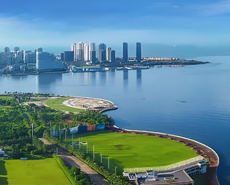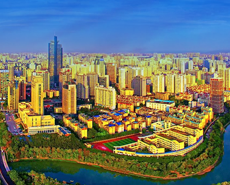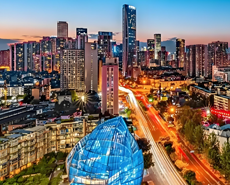
Chinese magnesite market to see obvious demand growth in Q2, 2020
----Interview with Gao Yanshi
General Manager
Fengchi Group
General Manager
Fengchi Group
Located in the industrial park of Mafeng, Haicheng, a city in the beautiful and rich hinterland of Liaodong Peninsula, Fengchi Group has five subsidiaries, three plants, one business tower, one production base for agricultural and sideline products, and four mines in the core production region of magnesite in China. Covering a total area of nearly 200 hectares, the company mainly produces magnesite, sintered magnesia, fused magnesia, magnesia products and rolled steel.
Asian Metal: Hello, Mr. Gao! Thank you for accepting the interview of Asian Metal. Would you please make a brief introduction to your company firstly?
Mr. Gao: We mainly produce various magnesia products using magnesite from our own mines. Our magnesite mines have a total reserve of 200 million tons with an annual mining volume of 2 million tons. In addition, our annual production capacity for dead burned magnesia, fused magnesia, high-purity magnesia and magnesia carbon brick reaches 350,000t, 150,000t, 200,000t and 60,000t respectively.


Asian Metal: Have you launched any production expansion project since 2018? We learned that many large companies have constantly expanded their production capacities since 2017 and what do you think of it?
Mr. Gao: We have built four new kilns to produce dead burned magnesia since 2018 and have raised our production capacity of the material by 70,000t to 350,000t. I don't think it's a good decision to expand production capacity blindly. Those companies without mines have to halt production or suffer much higher production costs once the supply of magnesite is disrupted. Many small and medium-sized companies suffer losses now due to difficulties in sourcing magnesite and higher production costs, being forced to halt production.


Asian Metal: Environmental inspection and the rectification of magnesite mines have become major factors affecting magnesia market in the recent years. How about the environmental rectification of your company? Would you like to share with us the outputs of your dead burned magnesia and fused magnesia in 2018 and 2019 respectively?
Mr. Gao: We have finished environmental rectification and can meet all requirements on environmental protection now. We produced 280,000t of dead burned magnesia and 150,000t of fused magnesia in 2018 with the outputs in 2019 estimated to be 350,000t and 150,000t respectively.

















